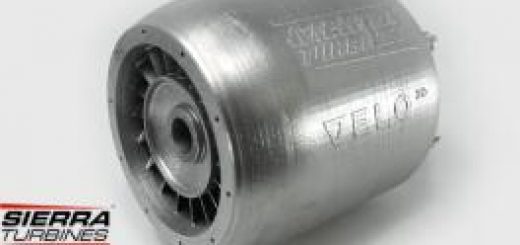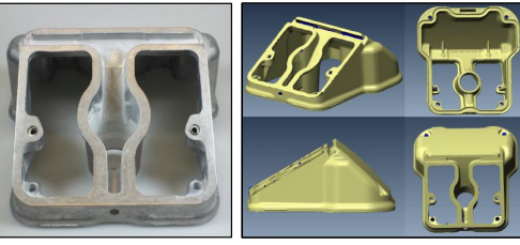NASA, AU Partnership Boldly Goes Where Few AM Projects Have Gone Before
The task to 3D-print a 10-foot tall rocket nozzle liner demonstrator for a large-scale, liquid rocket engine presented just one problem for DM3D Technologies — they didn’t have a machine large enough to produce it.
So, they built one.
 A two-ton additively manufactured full-scale RS25 nozzle liner printed by DM3D Technologies.
A two-ton additively manufactured full-scale RS25 nozzle liner printed by DM3D Technologies.
The Michigan-based directed energy deposition (DED) firm is the latest leading specialized technology vendor to partner with Auburn University’s National Center for Additive Manufacturing Excellence (NCAME) on its additive manufacturing (AM) research and development project with NASA for improving the performance of the liquid rocket engines.
Titled Rapid Analysis and Manufacturing Propulsion Technology (RAMPT), the project aims to evolve light-weight, large-scale novel AM techniques like DED — DM3D’s specialty. RAMPT is funded through the NASA Game Changing Development Program with the agency’s Space Technology Mission Directorate.
“Knowing that the technology we’re developing for the RAMPT project could support future exploration missions is extremely gratifying,” said DM3D president Bhaskar Dutta. “Auburn and NASA are very much at the forefront of AM research, and we began working with them around four years ago to print a nozzle that was approximately two feet in size, which seemed large at the time. Now we’re printing one for the RAMPT program that’s five times that height. This is one of the largest rocket engine components ever 3D printed.”
The exact dimensions of the approximately two-ton additively manufactured full-scale RS25 nozzle liner are 111 inches in height and 96 inches in diameter. The massive part was built over the course of several months — a greater than 50% reduction in processing time compared to traditional manufacturing techniques.
“Our goal,” said Dutta, “is to push the envelope on what our proprietary technology can do.”
NCAME director Nima Shamsaei, Auburn’s technical lead for the RAMPT project, is counting on it.
“DM3D’s cutting-edge technology and NCAME’s expertise in materials characterization and qualification will continue the advancement and infusion of these technologies into future missions and allow for industry to continue to build upon this development for other new, large-scale applications,” he said.
RAMPT co-principal investigator Paul Gradl, a senior propulsion engineer at NASA’s Marshall Space Flight Center in Huntsville, Alabama, is equally excited about pushing the technology’s limits through RAMPT.
“NASA has established these public-private partnerships to advance new approaches, process build volumes, materials, and component demonstrations using additive manufacturing,” he said. “The goal is to increase the technology readiness level to allow infusion into future NASA missions and commercial space applications.”
Source: AUBURN University
For press release, welcome to send to 3D Science Valley at 2509957133@qq.com




Recent Comments